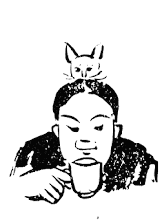Edward H. Schafer
Edward H. Schafer, The Vermilion Bird: T’ang Images of the South (Berkeley and Los Angeles: University of California Press, 1967), 116-118.
Edward H. Schafer (1913-1991) 曾经是我们系的头牌教授,拥有 Agassiz Professor of Oriental Languages and Literature 的掌门头衔,在我们系退休终老,辈分比 Cyril Birch 教授还要早。他做学问的路数,和现在的人不太一样。其实这不重要,重要的是他的学问太大太广阔了,实在是很难总结出固定的路数来。这几十年来,西方的中国文学研究突飞猛进,跨越了一个又一个里程碑, Schafer 教授的书早就不“热”了。但是他老先生的渊博是没人能超越的。这本著名的Vermilion Bird 给我的感觉是兼有中国古代类书囊括万有的广度与人类学宗师 Frazer 爵士 (1854-1941) 横扫千军万马的功力,确实罕见。谁要是缺少研究课题了,翻翻他的书,保证能处处见宝,随手找出半打以上的研究题目来。单单是欣赏他的行文风格,也是很引人入胜的。下面的这一段摘抄便是。在这里面老先生谈论的是柳宗元的《小石城山记》,随手也给翻译得十分传神。柳宗元的原文如下:
自西山道口径北逾黄茅岭而下,有二道:其一西出,寻之无所得;其一少北而东,不过四十丈,土断二川分,有积石横当其垠。其上为睥睨梁欐之形;其旁出堡坞,有若门焉,窥之正黑,投以小石,洞然有水声,其响之激越,良久乃已。环之可上,望甚远。无土壤而生嘉树美箭,益奇而坚,奇疏数偃仰,类智者所施也。
噫!吾疑造物者之有无久矣,及是,愈以为诚有。又怪其不为之中州而列是夷狄,更千百年不得一售其伎,是固劳而无用,神者倘不宜如是,则其果无乎?或曰:以慰夫贤而辱于此者。或曰:其气之灵,不为伟人而独为是物,故楚之南少人而多石。是二者余未信之。
~~~~~~~~~~~~~~~~~~~~~~~~~~~~~~~~~~~~~~~~~~~~~~~~~~~~~~~~~~~~~~~
Liu Tsung-yüan is an almost perfect example of the educated gentleman of [Page 117] the ninth century, neither “Confucian” nor “Taoist,” nor merely “Buddhist,” but receptive to all exciting ideas about the place of man in nature. Beyond this, his was a sensitive spirit with a gifted pen. No complicated imagist like Li Ho or Wen T’ing-yün, he wrote plainly and precisely, but with grace and style. His prose shows the true poet’s sense of the value and depth of each word chosen—though most are very ordinary words. He also wrote thoughtfully. We may observe both of these qualities in an essay he composed while in exile in the highlands of Nam-Viet. It is the well-known “Record of the Little Stone Citadel.”
If, after crossing directly northward from the mouth of the
Perhaps, like Baudelaire, Liu asked himself if there was a hidden meaning here. Perhaps the prodigy symbolized some great truth, or a battle between ancient gods, or a coming cataclysm.
La Nature est un temple ou de vivants piliers
Lt parfois sortir de confuses paroles ;
L’homme passe à travers des forêts de symbols
Qui l’observent avec des regards familiers.
If he did, the question would have been a natural one—the Chinese saw the messages of Heaven everywhere in nature. But Liu had no firm belief in portents. I imagine that his rhetorical question about the purpose of the Fashioner in placing this bizarre pseudo-artifact in a remote wilderness—surely not for the solace of exiled politicians—expressed his objection to a trivial view of the aims of creation. The creative spirit did not condescend to current taste by making its best creatures easily accessible to [Page 118] city dwellers. The divine plan allowed for a natural stone masterpiece on this far frontier as easily as for a rare flower or a secret waterfall in a similar place.


没有评论:
发表评论